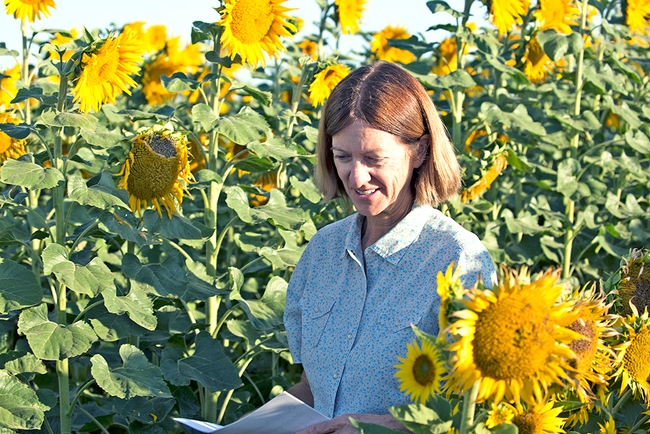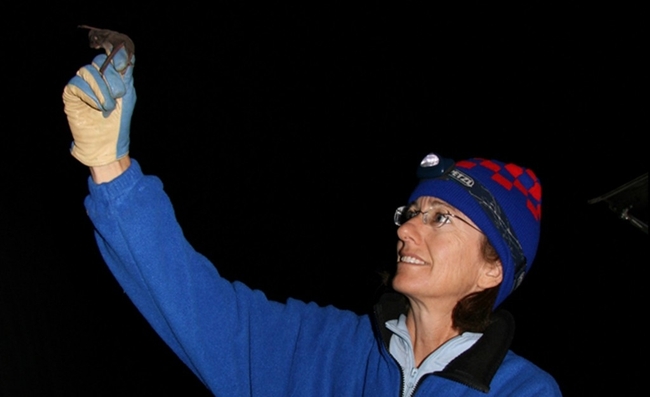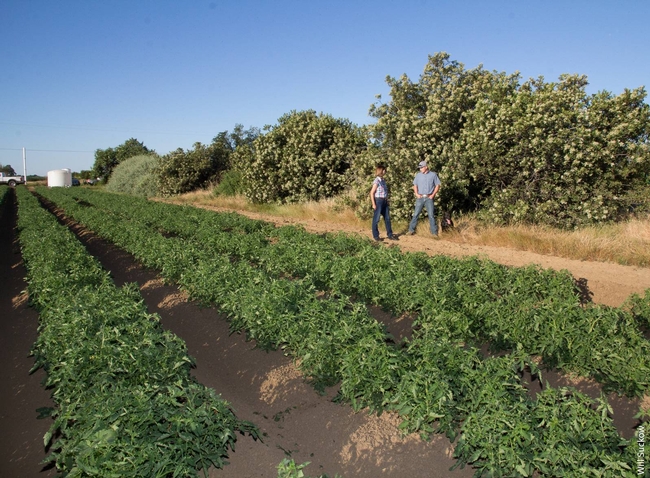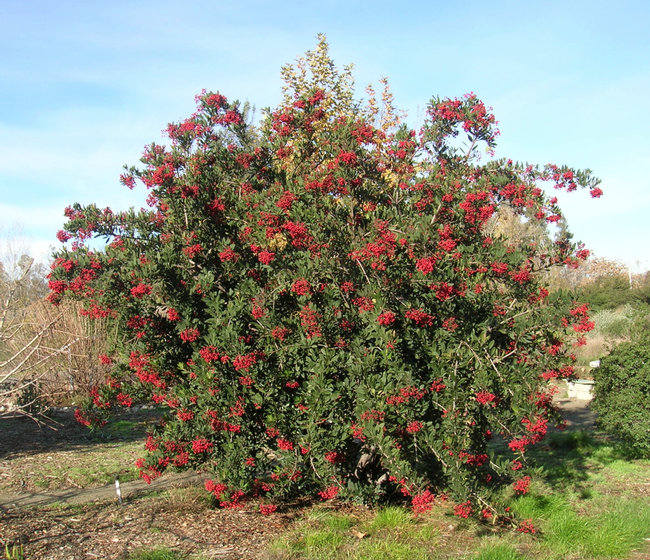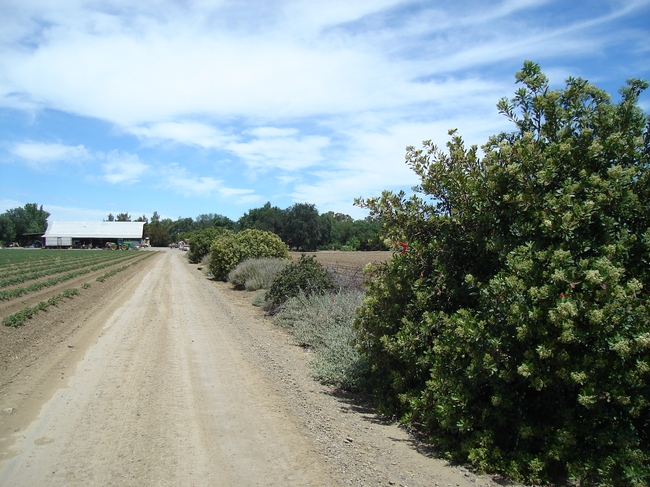
Posts Tagged: hedgerows
Rachael Long retires as UCCE farm advisor after 37 years
Long's research on crops, pollination and pest control guided farming practices in Yolo, Solano and Sacramento counties
Rachael Freeman Long grew up in Berkeley but was fascinated by farming. The UC Cooperative Extension farm advisor has spent the past 37 years doing research on crop production, pollination and pest control and collaborating with farmers.
Long worked with UCCE in Sonoma and San Joaquin counties as well as at UC Berkeley, before settling in Yolo County as a farm advisor in 1992. She has focused on field crops including alfalfa hay and other forages, dry beans, and hybrid seed crops such as sunflowers, melons and onions.
She plans to retire July 1 after serving growers in Yolo, Solano and Sacramento counties for 31 years.
Long's pest management studies highly influential
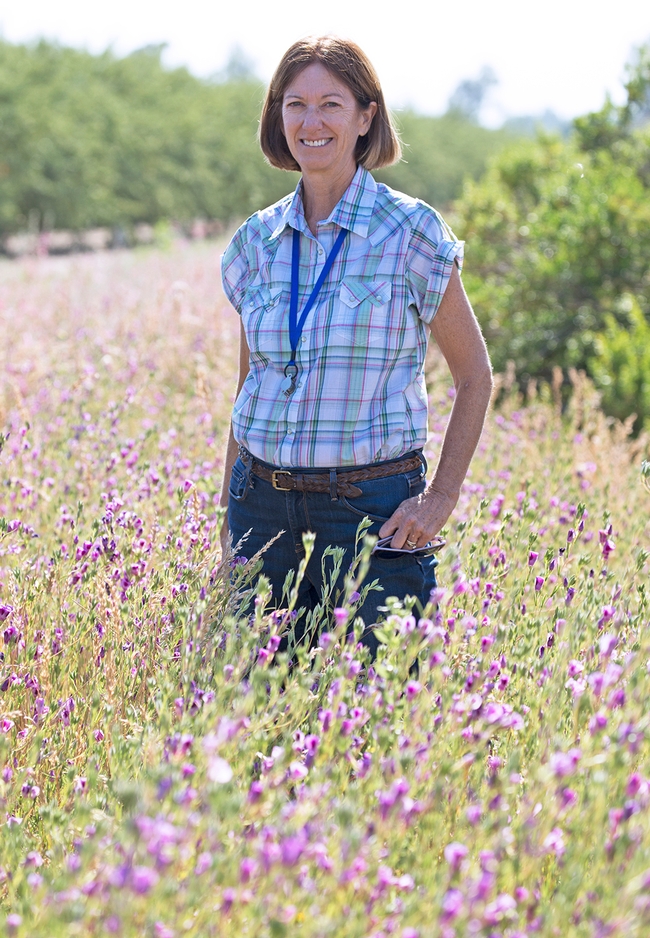
To produce practical research results, Long has collaborated on studies with the Hrdys and many other growers over the years. Her field studies informed the sunflower, alfalfa, onion seed and dry bean production manuals that she co-authored with UC ANR colleagues.
Cost-of-production reports on alfalfa, sunflowers, lima beans, common beans and garbanzo beans that she co-authored have been used by growers for obtaining farm loans. Since 2014, her cost studies have been used over 50,000 times.
Long's research and extension of integrated pest management practices have resulted in enhanced biodiversity, reduced pesticide use, higher crop yields, healthy soils and carbon sequestration, and greater farm productivity and profitability. Her research papers have been cited by scientists over 1,200 times. She was the recipient of the Bradford Rominger Agricultural Sustainability Leadership Award in 2019.
Adoption of new farming practices
Her work in the late 1990s documented how pesticides were transported offsite from farm fields in surface irrigation water. At the time, the agricultural industry was concerned the results would prompt increased regulations and restrictions on farming practices. But she persisted and her research led to the development and adoption of practices – such as pesticide choice and vegetative filter strips including cover crops – that are now commonly used to protect surface waters from pesticides used on farms.
“I'm proud of my community and appreciate the opportunity to work with farmers and the privilege of conducting research on farms,” Long said. “I'll forever be grateful to landowners for their support of my projects, even ones that seemed so far out there, like studying bats and pest control in walnut orchards!”
Her research has shown that bats, as well as insectivorous birds, help control insect pests on farms, which helps growers reduce their reliance on pesticides.
As scientists look for ways to slow climate change, one of Long's recent studies revealed that hedgerows sequester 36% more carbon than farmed areas.
“I loved working with students and postdocs on hedgerows,” she said. “We found that field edge plantings of native plants provide floral resources for natural enemies and bees that move into adjacent crops for enhanced pollination and pest control services in adjacent crops, reducing pesticide use and boosting yields. I'm proud that many have gone on to pursue careers in agriculture and natural resource conservation.”
Hedgerows become conservation practice
Mary Kimball, CEO of the Center for Land-Based Learning in Woodland, was Long's field assistant in 1996. Kimball, who worked for the Yolo Resource Conservation District, was the project manager for the first hedgerow project that Long led.
“Over the years, Rachael has strategically and methodically tackled every question, concern and potential barrier for on-farm hedgerow installation – not only disproving all of the myths about pests, but showing the dramatic importance of these native plant hedgerows to everything from wildlife habitat, insectary value, use by bird species, and most recently, carbon sequestration,” Kimball said.
“As a result, hedgerows are now by far the most applied-for conservation practice by farmers and landowners through USDA Natural Resources Conservation Service cost-sharing programs across the state,” Kimball added. “Her impact and the way that she went about doing this research – in collaboration and with all needs and concerns of the farmer in mind – show us how to tackle new ideas and ensure their sustainability over time.”
Lifelong interest in agriculture evolves with technology
The daughter of a UC Berkeley biology professor and graduate of UC Berkeley with a B.S. in biology and UC Davis with an M.S. in entomology, Long always had an interest in wildlife, conservation and exploring the natural world.
“I've always been interested in agriculture, probably from spending summers as a kid with family in Sonoma County,” she said. “However, what totally sparked my interest in crop production was hearing a farm advisor talk about integrated pest management when I was in college. I found that so inspiring that I changed my major from pre-med to agriculture, a great decision, not only for my career, but I met my husband through work and we currently live and farm here in the Woodland area.”
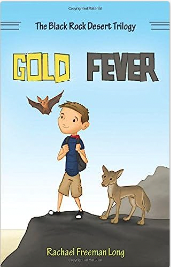
For a recent project addressing labor shortages, she developed research-based guidelines for growers to use spray drones to control pests in alfalfa hay production.
As a mother and a scientist, Long is committed to piquing children's interest in science. She has published three children's books chronicling a boy's adventures with wildlife, based on stories she told her own son, Eugene. Long recently published “See You Later Alligator,” an online children's book.
In retirement, Long is looking forward to having more time to write kids' books focusing on science literacy and “sharing more about how to respect and live with wildlife for everyone's safety – animals and people.”
“Next is a high adventure story that brings kids into a world of bees!” Long said. “I'm super excited with this ArcGIS storymap format to share online with kids! It's a great teaching opportunity maps, illustrations, and a storyline, along with discussion questions to engage kids!” Long and colleagues recently created a storymap on Native Bees.
Long, who received prestigious emeritus status from UC Agriculture and Natural Resources, will also finish up some research projects.
Ag Award Recipient Rachael Freeman Long: A UC Davis Professor Sparked Her Interest in Biocontrol
Rachael Freeman Long treasures her memories as a graduate student in entomology at the University of California, Davis. She remembers eating fried grasshoppers at a party. "They're okay with a lot of spices!" She remembers watching Professor Harry H. Laidlaw Jr. and his wife, Ruth, give one...
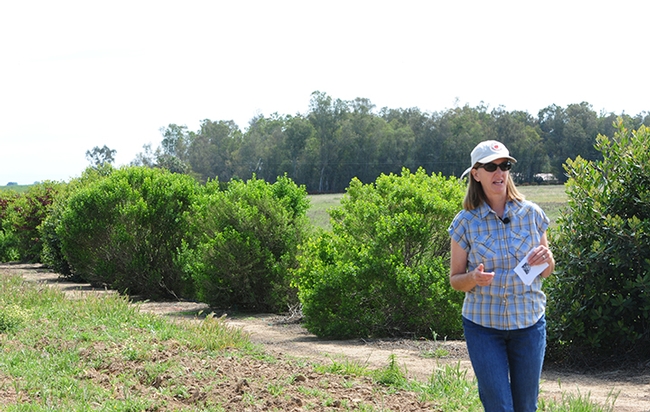
Rachael Long, UCCE farm advisor, leads a tour of her family farm in Yolo County in April of 2015. "Hedgerows are important for enhancing beneficial insects, including bees and natural enemies, for better biocontrol and crop pollination in adjacent field crops, with measurable economic benefits," she says. (Photo by Kathy Keatley Garvey)
Birds are beneficial too!
Across the globe, scientists have shown that birds can be farmer allies. Insectivorous birds feed on damaging insect pests in many crops including coffee, cacao, oil palm, corn, cabbage and apples. Raptors, including hawks and barn owls, feed on rodents, including gophers, voles and mice (see blog, Barn owls help clean up rodents naturally).
Despite this deep historic knowledge that birds are important predators of crop pests, over time the perception of birds as natural enemies of pests has been generally replaced with the idea that birds are often major crop pests themselves. Indeed, some bird species — like some types of insects — can cause trouble for farmers, but many others — especially those that eat insects and rodents — can be beneficial.
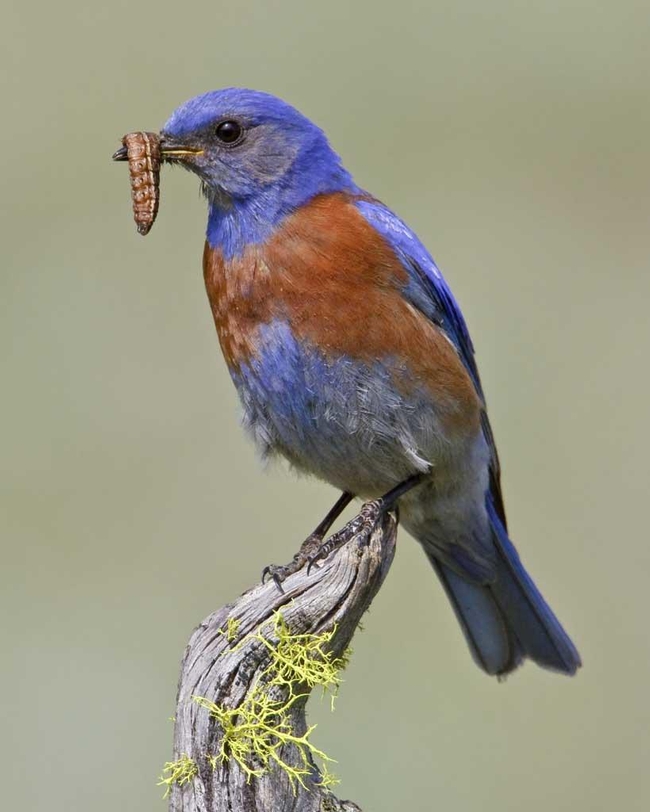
Do birds control insect pests on farms in California's Central Valley?
They do! Recent studies by Dr. Sacha Heath, UC Davis, and Rachael Long, field crops and pest management advisor, UC Cooperative Extension, showed that birds help control insect pests in walnut orchards. Dr. Sara Kross (UC Davis postdoctoral alumnus, now with Columbia University) showed that birds help control alfalfa insect pests.
Birds are voracious predators of codling moth pests in walnuts
Codling moth is a major worm-like pest that infests walnuts, apples and pears. The larvae go dormant during winter, living in cocoons in crevices in trees. Adult moths emerge in the spring, lay eggs and infest crops.
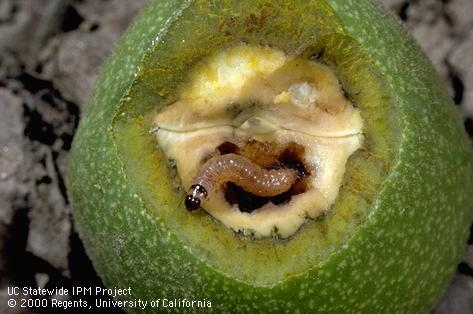
We evaluated bird predation of codling moth using “sentinel prey” and exclosure cages. We glued codling moth cocoons to walnut trunks and covered them with cages, allowing insects and spiders to access the cocoons, but not bird predators. This allowed us to count how many larvae were eaten inside and outside of the cages to estimate pest reduction by birds.
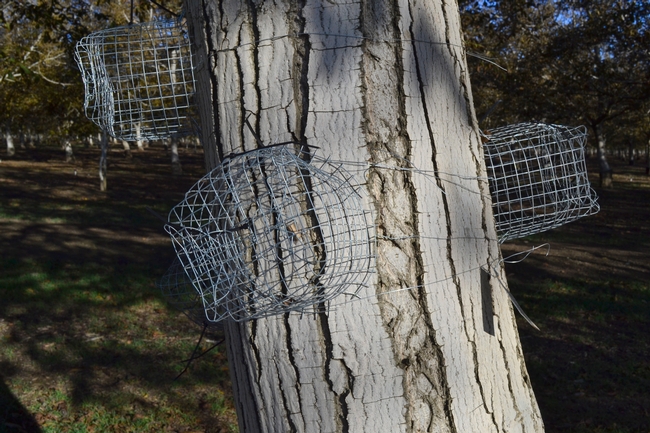
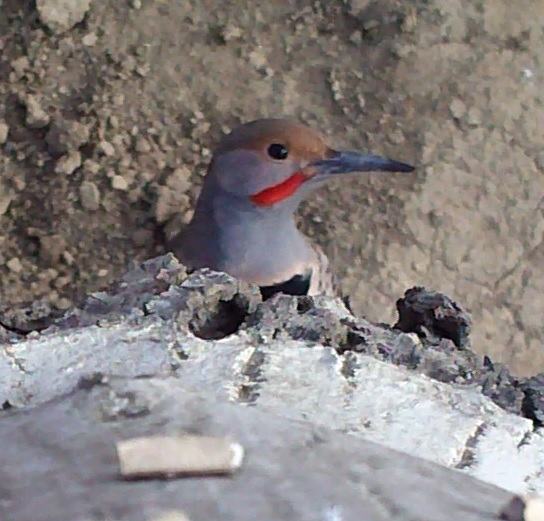
What did we find?
Natural enemies, like parasitic wasps and lacewings, alone reduced codling moth larval numbers by 11%; adding birds into the pest control system reduced them by 46%! Nuttall's woodpeckers and white-breasted nuthatches did a lot of the work; these birds travel up and down the trunks of trees, searching for insects.
Above, a white-breasted nuthatch preys on a codling moth larva “sentinel cocoon” on a walnut tree. Video by Sacha Heath.
Alfalfa weevils are no match for insectivorous birds
Alfalfa weevils are key pests of alfalfa, reducing yields and hay quality if left uncontrolled. Dr. Sara Kross looked at bird predation of this pest by excluding birds from alfalfa plants via cages, and counting the number of weevils inside and outside the cages. She found that birds reduced the number of weevils by more than 30%, showing their importance in helping to protect alfalfa from this serious pest.
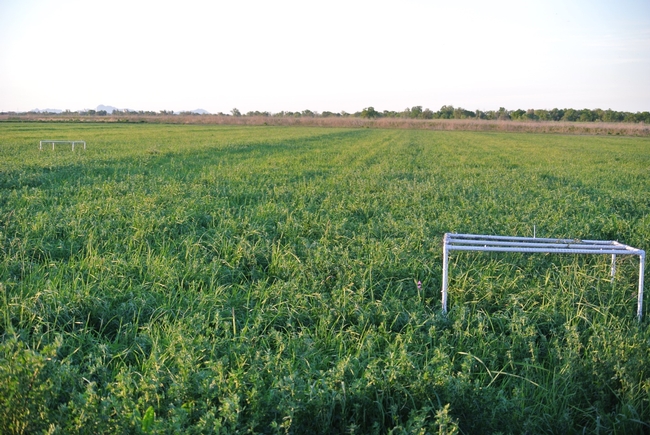
Does field edge habitat, like hedgerows, help attract beneficial birds?
Yes! Hedgerows are important habitat for beneficial birds, serving as nesting, foraging and roosting sites. In a study in the Sacramento Valley, crop margins with hedgerows, tree lines and riparian buffers harbored up to six times more birds and up to three times more bird species than bare or weedy margins.
Walnut orchards adjacent to hedgerows and riparian areas had higher numbers of beneficial birds along with more species. In alfalfa, there were more beneficial birds in fields when at least two tall trees were present along the field edges. More beneficial birds were associated with better pest control, that is, fewer codling moth cocoons and alfalfa weevils.
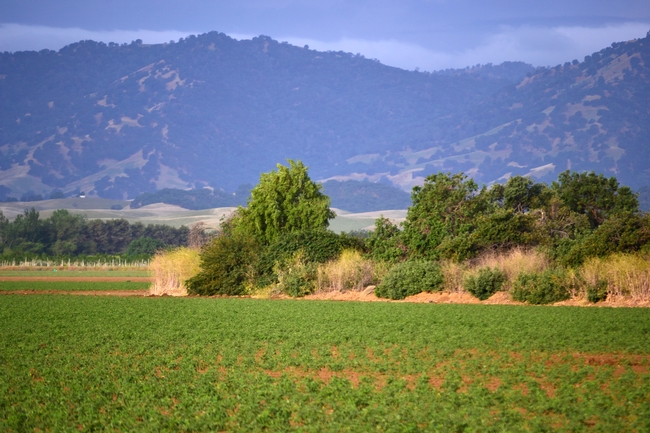
Birds have large territories, fly long distances, and are influenced by what happens on the farm as well as by what happens in the landscape around the farm. For example, we found that codling moth predation by birds greatly increased in walnut orchards as the amount of habitat in the landscape around the orchards increased (including hedgerows, tree lines, riparian and oak woodlands, and grasslands).
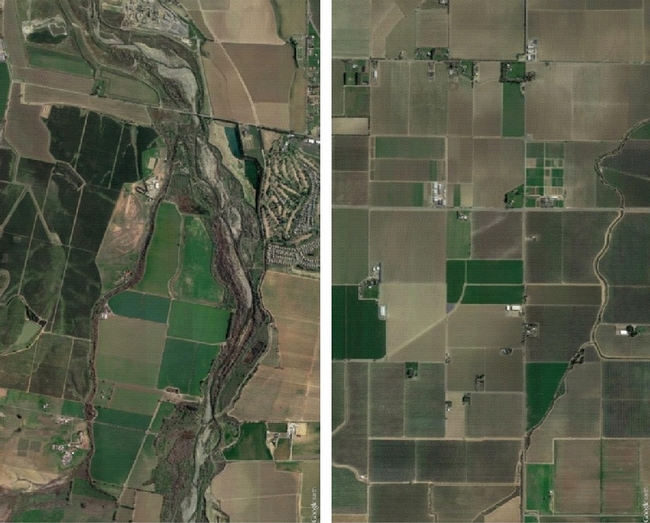
Will hedgerows increase the numbers of pest birds?
Pest birds are present on farms regardless of field edge habitat (such as weedy vegetation or hedgerows). Cases will be different, depending on the crop, but in the fields and orchards of Yolo County, researcher Hillary White (formerly with UCCE and now with U.S. Fish and Wildlife) found that three of the most common avian crop pests (American crow, red-winged blackbird and Brewer's blackbird), were up to 10 times more abundant in agricultural fields with bare or weedy margins than in fields with hedgerows.
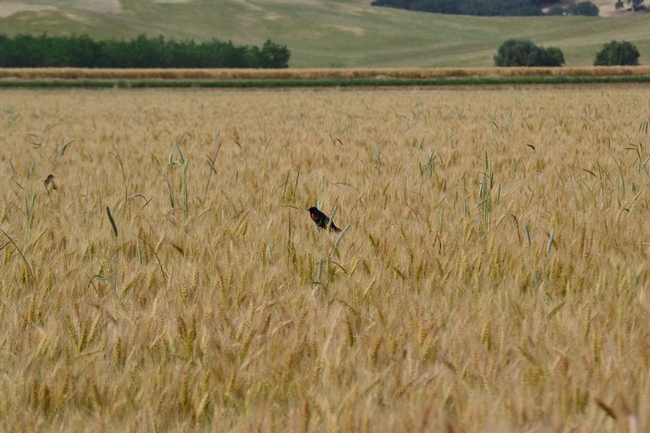
What can I do to attract beneficial birds to my farm?
Our avian research team has been quantifying the conditions under which birds are helpful or harmful to growers. We are looking for ways to help farmers create bird habitat on their farms to harness the beneficial pest control services birds can provide, while also protecting crops from the damaging effects of some bird species. This information is available in the new publication “Supporting Beneficial Birds and Managing Pest Birds,” co-authored by the Wild Farm Alliance and Drs. Kross and Heath, and technically advised by UC Cooperative Extension and several farmers. This is a user-friendly guide for farmers and conservation practitioners, with the goal of co-managing farmlands for biodiversity and farming.
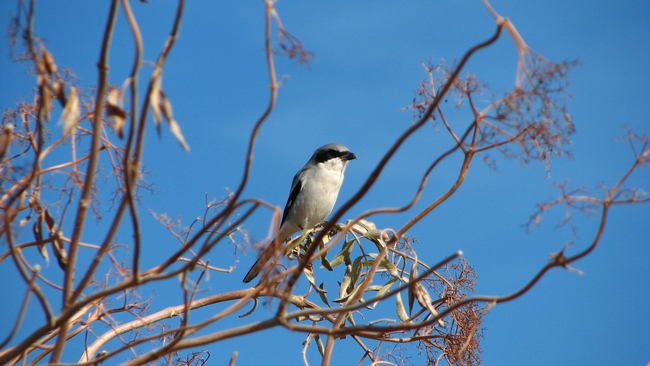
Dr. Sacha Heath received her PhD from UC Davis's Graduate Group in Ecology and will soon be starting a postdoctoral fellowship with the Living Earth Collaborative in St. Louis, Missouri.
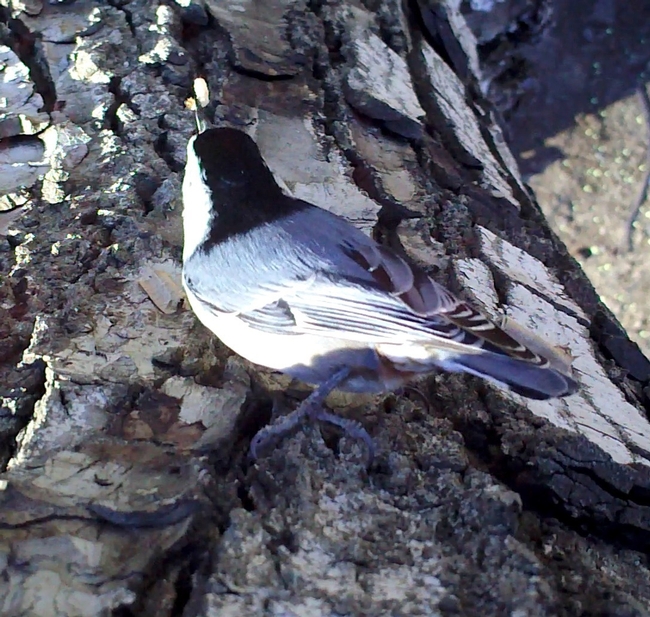
A white-breasted nuthatch preys on a codling moth larva “sentinel cocoon” on a walnut tree. (Video still: Sacha Heath)
Good news for hedgerows: No effects on food safety in the field
Hedgerows enhance wildlife abundance and diversity around farmland without contributing to food safety problems in field crops, according to a new study published by a team of University of California researchers. The UC Agriculture and Natural Resources and UC Davis study documented that field edge plantings around farms are generally too narrow relative to the surrounding landscape to be a source of rodents and foodborne pathogens.
“This study is particularly pertinent right now when FDA's Food Safety Modernization Act (FSMA) is calling for farmers to co-manage wildlife and agriculture, instead of clear cutting wild habitat around their crops,” said co-author Rachael Long, UC Cooperative Extension farm advisor in the Sacramento Valley. “Our paper provides support for this ruling, showing that the presence of hedgerows does increase wildlife diversity, but does not increase wildlife intrusion into the fields and, more importantly, does not increase the prevalence of animals carrying foodborne pathogens.”
This is good news for hedgerows, rows of shrubs, trees, grasses and flowers that are planted on field edges. The plants bordering crop fields provide habitat and floral resources for beneficial insects, such as bees and natural enemies, that help with pollination and biocontrol of pests in adjacent crops. Hedgerows also help enhance biodiversity – especially for insect-eating birds – help reduce wind and soil erosion, and protect water quality.
The two-year study in Sacramento Valley walnut orchards and processing tomato fields was led by Long and Roger Baldwin, UC Cooperative Extension vertebrate pest control specialist at UC Davis, former graduate student Laurel Sellers, the Western Center for Food Safety at UC Davis's Michele Jay-Russell, Xunde Lib and Edward R. Atwill, and Richard M. Engeman of USDA National Wildlife Research Center.
The study, titled “Impact of field-edge habitat on mammalian wildlife abundance, distribution, and vectored foodborne pathogens in adjacent crops,” was published in the February 2018 Crop Protection (Sellers et al. 2018).
Elsevier is providing 50 days of free access to this article. Anyone clicking on the following link before March 31, 2018, will be taken directly to the article on ScienceDirect. No signup or registration or fees are required. Simply click and read at https://authors.elsevier.com/c/1WXU~xPFYej~4.
This journal article supports a growing body of literature suggesting that plantings along the edge of fields do not substantially attract wildlife species that intrude on fields and transfer foodborne pathogens. For example, in a 2015 study, UC Davis researchers found more food pathogens when wildlife habitat was reduced on farms. This may be attributed to the vegetation filtering pathogens, a better breakdown of pathogens in diverse environments, and that removing vegetation may not deter wildlife from entering farm fields.
Relative to the larger crop acreage, hedgerows and similar field-edge habitats are generally too linear and small to serve as a significant source of rodents to damage nearby crops. However, cottontail rabbits favor hedgerows, and can sometimes cause damage to adjacent seedling crops.
“Overall, we found risk of crop loss or contamination of foodborne pathogens in crops bordered by hedgerows wasn't significant in our study in the Sacramento Valley, although potential damage could vary by the stage and type of crop and wildlife species present,” Long said. She will be presenting this work at the 28th Vertebrate Pest Control Conference, which will be held in Rohnert Park Feb. 26 to March 1.
In its Standards for the Growing, Harvesting, Packing, and Holding of Produce for Human Consumption, the U.S. Food and Drug Administration says, "We continue to encourage the co-management of food safety, conservation, and environmental protection.”
Further reading:
Hedgerow benefits align with food production and sustainability goals. http://calag.ucanr.edu/archive/?article=ca.2017a0020
Comanaging fresh produce for nature conservation and food safety. http://www.pnas.org/content/112/35/11126
X
Hedgerows next to crops can enhance pest control

UC Agriculture and Natural Resources and UC Berkeley researchers analyzing hedgerows in Yolo County have found that not only are farmers diversifying their land by planting hedgerows, but those hedgerows are attracting natural enemies that provide economic benefits.
The two-year study of hedgerows planted adjacent to processing tomatoes showed higher numbers of natural enemies such as lady beetles (aka lady bugs) and fewer crop pests compared with conventionally managed field crops edged with residual weeds.
The researchers discovered that the increase in natural enemy activity in the hedgerows extended 600-feet into adjacent tomato crops and resulted in a reduction of aphid pests and an increase in stink bug egg predation by parasitoid wasps. Tomato fields adjacent to hedgerows required fewer pesticide treatments than the tomato fields without hedgerows.
The scientists concluded that hedgerow restoration on field edges could enhance pest control, reducing the need for chemical pest control, as reported in the Journal of Agriculture, Ecosystems and the Environment.
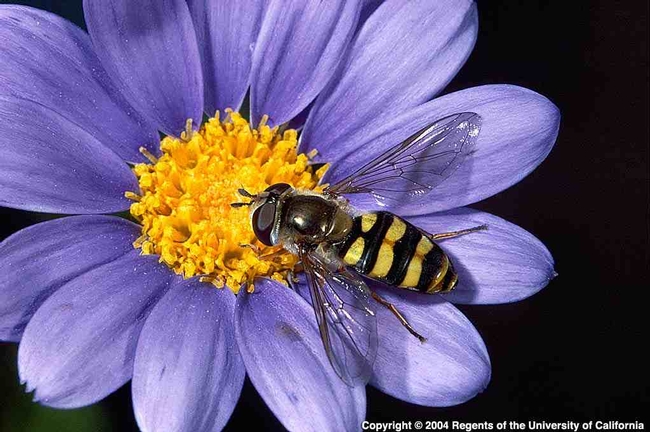
Additional research has shown that hedgerows are important for pollinators, such as native wild bees, that feed on flowers and nest in the ground or holes in plant stems. More wild bees are present on farms with hedgerows than with conventionally farmed field edges. Native bees are important in crop pollination, especially with the decline of the honey bee population.
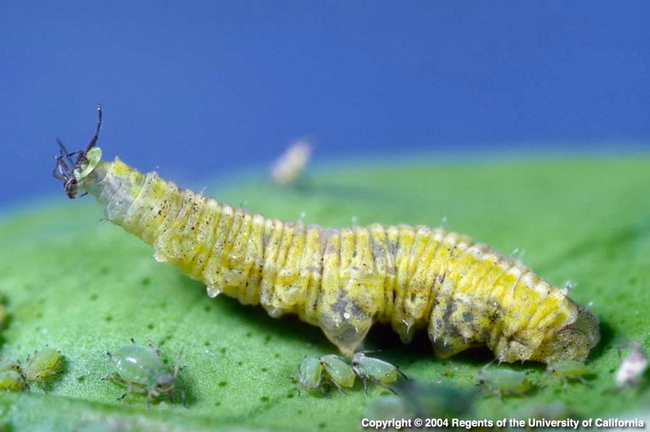
Hedgerows cost about $4 per linear foot to plant and manage for the first three years for a single row of shrubs and native grasses about fifteen feet wide. The Natural Resources Conservation Service (NRCS) offers cost-share programs through USDA's Environmental Quality Incentives Program (EQIP) that covers about 50 percent of the establishment costs. However, due to less pesticide use, a hedgerow can pay off in about 15 years. Add pollination services in areas without an adequate number of honey bees for crop pollination, and that time can be significantly reduced.
With a grant from the California Department of Pesticide Regulation, the Yolo County Cooperative Extension Service seeks to spread the word about the ecosystem service benefits provided by hedgerows planted on farmland. During the past two-years, the researchers hosted workshops in Northern California on the value of hedgerows on farms, reaching hundreds of farmers and landowners. The researchers also offer advice on hedgerow plantings, including plant selection and how to establish and manage hedgerows. Planting hedgerows does not take land out of production; it's using areas that cannot be farmed, such as along fence lines or terraces from land leveling, and providing economic benefits.
More information on hedgerows is available at http://ceyolo.ucanr.edu/Custom_Program/Hedgerows/. The principal investigator is Rachael Long, Yolo County farm advisor.
Additional examples of hedgerows on Yolo County farms:

Hedgerow planted in western Yolo County.
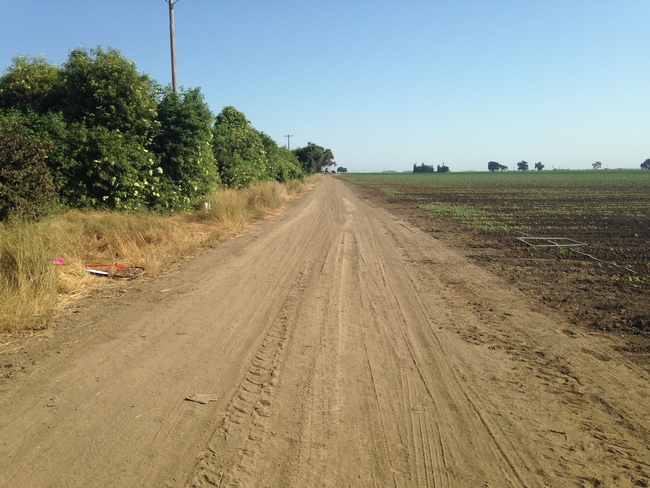
Hedgerow3


